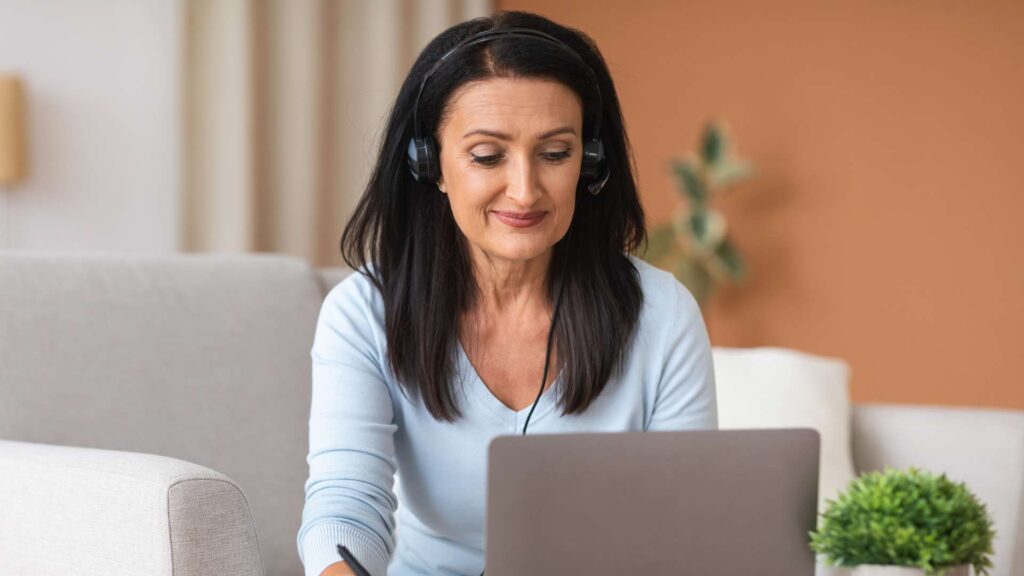Table of Contents
Your child feels too warm in the middle of the night. As you look at the thermometer and see something that causes your stomach to turn, you begin to think that it is an emergency. Maybe you are two in the morning and unsure whether to take some fever pills, or you’ve developed a strange rash after daycare.
Every parent occasionally experiences these anxious times. We rarely receive calls about rash, fever, or medication safety when we’re open for business. Because it enables patients to see pediatric specialists in a quick, dependable, and economical way from the convenience of their homes, pediatric telehealth has grown to be a vital service. Telehealth can help parents determine if an in-person visit is necessary or address questions about their child’s medication dosage.
This tutorial discusses the benefits of pediatric telehealth for families, how to be ready for a virtual appointment, and why a physical examination is still required.
Why Pediatric Telehealth Matters
Any parent must cope with unforeseen circumstances, but handling health issues can be particularly taxing. There are numerous essential ways that telehealth fills the gap between in-clinic visits and at-home care:
- Accessibility: You will not have to wait in long queues at crowded emergency care centres or drive across town. You can handle last-minute problems, school drop-offs, and naps with the help of virtual services.
- Price: Video calls tend to be cheaper than visiting the emergency room or the urgent-care department with minor symptoms.
- In low-income or rural neighbourhoods, families can visit a paediatrician in person despite covering long distances.
Telehealth can help working parents by allowing them to receive professional assistance without being limited by the time and resources they use to care for their children, work, and manage their household.
Managing Fevers With Telehealth

The complex process of taking a sick child to the hospital is typical when they have a fever. Although most fevers are the body’s way of fighting off illness, a sharp increase in temperature could be a sign of a panic attack. Telemedicine offers comfort and education.
What Parents Can Track Before the Visit
Before logging on, collect the following data to aid the provider in evaluating the situation:
- Note the highest reading and if an oral, forehead, or ear thermometer was used while taking a temperature.
- What is the duration of the fever? Is it continuous or does it come and go?
- Lethargy, coughing, poor eating, rash, and extreme irritability are all related symptoms.
- Include the most recent dosage of any medications and any fever reducers you’ve taken.
When this information is easily accessible, the telehealth provider can deliver faster and accurate recommendations.
What Telehealth Providers Can Offer
Paediatricians are capable of:
- When is a fever normal, and when should it be a cause for concern?
- Provide them with information about caring for their home, including the recommended comfortable temperature level and the daily water requirements.
- Symptoms such as fever, which cannot be easily resolved, trouble in breathing, or the occurrence of seizures must activate physical examination or a visit to the emergency department.
The presence of the plan will also enable the parents to know when to give more attention to their children and when to observe them at home.
Understanding Rashes Through Virtual Care
Another common cause of concern for parents is rashes. Even though they are harmless, they can show up unexpectedly and shockingly.
Common Types of Rashes in Children
People in the telehealth industry frequently observe:
- Skin responses (contact dermatitis, hives)
- Hand-foot-mouth disease and rosaola are viral rashes.
- Flare-ups of the epidermis with dry, itchy regions
- The friction of the skin and sweating bring about heat rash.
How Telehealth Helps
Current smartphones have high-resolution cameras, which enable parents to post photos or have a live video call to show their kids the rash live. Service providers evaluate:
- The location, size, and pattern of the rash
- Conditions like heat, stinging, or pain
- Possible triggers include food consumed recently, soaps, or diseases.
Then they can propose solutions such as OTC lotions, antihistamines, or simply watching the case over a few days.
When In-Person Care Is Required
Not all rashes can be treated using online medicines. Telehealth professionals will refer families to urgent or emergency care facilities in the following situations:
- Quickly turning into blisters.
- Occasionally accompanied by respiratory issues or a fever.
- Experiencing discomfort, leaking, or exhibiting symptoms of infection.
With this advice in hand, parents might decide to visit the doctor or simply “wait and see” instead of making assumptions.
Dosing Guides and Safe Medication Use
Giving the wrong amount of medication is one of the biggest concerns for parents. That uncertainty can be dispelled with telehealth.
Common Medications Covered in Telehealth Consults
Experts in supply chains usually offer advice on:
- Use Tylenol to treat pain or fever.
- Ibuprofen (Motrin, Advil) is administered to children over the age of six months in the treatment of fever and inflammation.
- Medications against moderate and severe allergies.
How Telehealth Guides Parents
- Weight-based dosage: Doctors differ on the issue of dosage, since they do not only use the age of the child, but instead use the current weight.
- Safe intervals: They are a specification of when you can resume using your medication and whether you should switch medications.
- Doctors caution patients against using two medications which have the same active constituent simultaneously.
Safety Precautions
To avoid unintentional double-dosing, telehealth providers advise maintaining a written record of prescriptions when several persons are taking turns looking after a child.
Particular dosage guidelines are given to parents whose children have a history of chronic illness or preterm birth.
Benefits of Telehealth for Parents
In addition to medical guidance, telehealth also gives emotional assistance.
- Parents should avoid unnecessary late-night trips to urgent care facilities and prolonged, tense waiting times.
- Easy instructions: Parents can feel less anxious and uncertain when care plans are clear and comprehensive.
- Home-based follow-ups: Many services simplify check-ins and reporting to doctors on progress or symptoms.
The reassurance is priceless to parents who are at a loss, whose child is in danger.
When to Use Pediatric Telehealth vs In-Person Care
Telehealth is not universal and practical. Know the difference to protect your child’s health.
- Telehealth is best for:
- Mild to severe fevers are not life-threatening.
- Common rashes that don’t spread quickly
- No problems with diet, sleep, or mild, non-life-threatening cold symptoms.
- In-person care is needed for:
- Children under three months of age who have a fever.
- Repeat vomiting
- Blue lips and difficulty breathing are signs of dehydration.
- Quick deterioration of a rash or allergic reaction
In case any of the red flags are detected during the session, telehealth clinicians will always refer the parent to the nearest urgent care centre or emergency care.
Cost and Insurance Considerations
The affordability of pediatric telemedicine is an additional benefit.
- A video consultation typically costs between 40 to 75 dollars, which is far cheaper than the price of an urgent care or ER visit.
- The majority of significant health insurance providers cover telehealth appointments at costs comparable to those of in-person care.
- Numerous platforms accept flexible spending accounts (FSAs) and health savings accounts (HSAs).
- Some businesses offer fixed-price monthly plans that are perfect for families with recurring needs like seasonal allergies or recurring ear infections.
Telehealth has made affordable, professional advice accessible to low-income families, removing the need for costly, after-hours clinic visits.
Quick Parent Checklist
| Task | Why It Matters |
| Track symptoms | Record fever readings, timing, and any other signs. |
| Take clear photos | Good lighting helps providers assess rashes accurately. |
| Know your child’s weight | Accurate dosing depends on current weight, not just age. |
| List current medications | Prevents dangerous drug interactions or double-dosing. |
| Prepare questions | Write down concerns so nothing is forgotten during the visit. |
Conclusion
Parenting comes with countless uncertainties — and when your child falls ill in the middle of the night, those worries can feel even heavier. With telehealth, parents can connect with trusted doctors from home and receive timely guidance and prescriptions for common issues like fevers, rashes, or colds — without the long waits or late-night ER trips.
While virtual visits can’t replace in-person care for emergencies, they offer real relief for everyday concerns, helping families save time, money, and stress. Pediatric telehealth makes it easier to monitor a persistent fever, track medications, and ensure your child gets the care they need — all with just a few taps on your phone.
With Beem Health, parents can access $0 virtual doctor visits via Teladoc, prescription discounts, and round-the-clock counseling and wellness support — making it simple to keep your family’s health on track.
Keep your kids healthy and your mind at ease — download the Beem app today for fast, affordable care right from home.















































